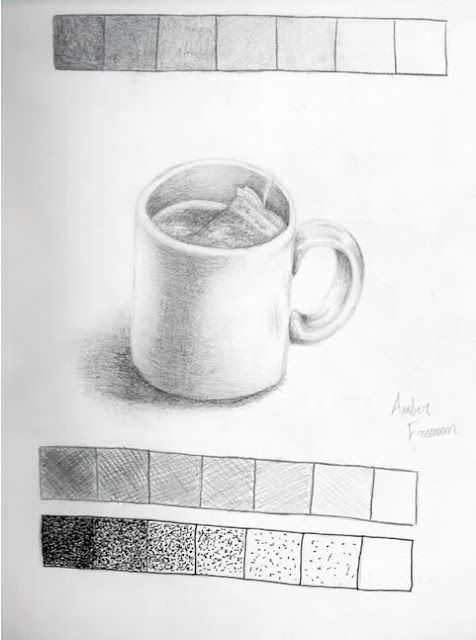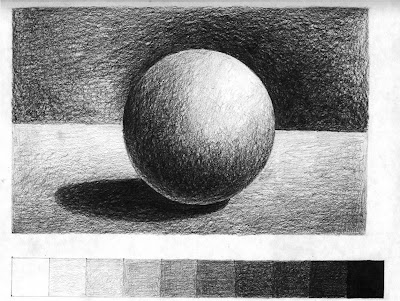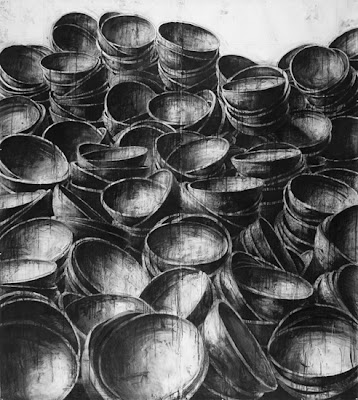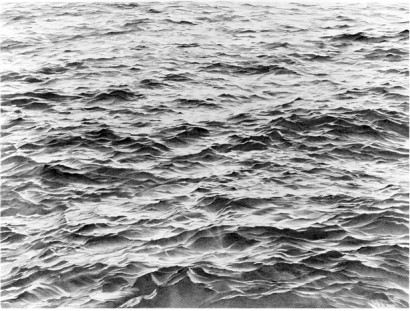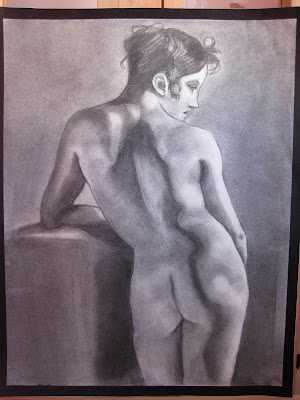Wednesday, March 16th
AIM: What are the procedures for carving?
Do Now: Take a piece of the linolium that has been laid out. I will hand out tools in a moment. First we need to go over what each tool is, how it works and what the proper procedures are for carving. It is very east to slip up and cut yourselves so in order avoid this you absolutly MUST pay attention and demonstrate an understanding before you begin carving.
Tuesday, March 15th
AIM: What is printmaking and how does it work?
Do Now: Get ready for some note taking! Today we are going to look at a number of prints and discuss the process of print making! Here we go!
Today's Activities:
Before we begin on our final project I want to start with a mini print so you can get a feel for the material and how it works. By the end of class today you need to have a completed sketch that you would like to transfer onto a small piece of linoium. Tomorrow we will carve the linolium and you can see and feel how it really works.
Monday, March 14th
AIM: What has decorating our sketchbook done for us as artists?
Do Now: Take your sketchbook and place it on the table in the center. I want you to take the next few minutes and walk around looking at your classmates sketchbooks. For each book I want you to write down one thing that stands out, one thing that you really like and one idea that you have for something to add or subtract from the final piece. Write this in your sketchbook and once you have finished please take a seat. Do not share what you write with any of your classmates, we will discuss together as a class.
Today's Activities:
Questions to consider:
Why take the time to create our covers?
Does the work you have done on your sketchbook change your relationship with the book?
What does your cover say about you?
What do you want this book to be about? Does your cover reflect this?
Friday, March 4th
AIM: What is a body of work and how can we begin to identify the work that we are interested in making?
Do Now: Take a moment and think back on the work you have done in your previous classes. How do you feel you evolved as an artist and do you feel more confident at this point to begin making your own artistic decisions? For example, what do you want this sketchbook to be about? Take a few minutes and write down your ideas for your cover. Why are you interested in these things? What makes them important to you and how do you intend to communicate them through your work?
Today's Activities:
At this point we should either be working on our cover or thinking of what kind of cover we are going to make.
Thursday, March 3rd
AIM: How can we be prepared to turn our sketchbooks into a project?
Do Now: I'm going to show you a number of different examples and I want you to start thinking about how to turn this book into a project of its own.
Now, WHY SKETCHBOOKS? Why should we bother?
Sketchbooks:
Most artists keep sketchbooks in which they experiment with ideas and collect drawings of their environment.
- The most famous artist sketchbooks are those of Leonardo da Vinci. His sketchbooks are filled with drawings, diagrams and written notes of things he saw and ideas he came up with.
- Picasso produced 178 sketchbooks in his life time. He often used his sketchbooks to explore themes and make compositional studies until he found the right idea and subject for a larger painting on canvas.
- Henry Moore, filled one of his sketchbooks with drawings of sheep that often wandered by the window outside his studio.
If you want to be an artist, it's a good idea to start carrying a sketchbook around with you all the time. You can draw in your sketchbook, write in it and stick photographs and other things you find in it. Later on, you can return to your sketchbook when you're looking for ideas for making works of art.
Real progress in developing yourself as an interactive designer will depend on you frequently and habitually sketching out your ideas and their variations, reflecting on your ideas, and then developing those that seem promising. Use your sketchbook to help you develop this habit.Sketchbooks are useful in many ways.
- It will serve as a way for you to refer back to your ideas over time.
- It is a place for you to document and annotate your own ideas.
- You can write down good ideas you see elsewhere e.g., in other systems, in your readings, and in your classmates' work.
- You can also collect existing material (e.g., pictures from magazines, screen snapshots) and tape them into the sketchbook.
- Regular use of the sketchbook will help you develop your skills, your accuracy and your confidence in sketching out your ideas.
Sketches do not have to be pretty, beautiful, or even immediately understandable by others.
The sketchbook will help you learn the following.- You will develop your skills in freehand sketching and annotation as a way to describe visual information (ideas and descriptive details) related to the the course materials you are learning.
- You will develop the sketchbook as a personal reference of tracing your design ideas and for reflecting on the progress of these ideas.
- You will acquire the habit of using a sketchbook for freehand sketching and annotations of interface ideas (from casual and spontaneous ideas to studied interface design development) and for detailing where inspirations came from (other systems, students, magazines, etc.)
Carry your sketchbook around with you wherever you go. Look for things to record in your sketchbook. Remember that as an artist you have to look closely at things. Drawing requires courage! Once you've done your first sketchbook, others will be easier to do.
Wednesday, March 2nd
AIM: How much gesso is enough?
Do Now: Take a look at what you have completed so far. Can you see through to the cardboard or cover? If so is this an effect that you want or no? How many coats do you need? Let's start by sanding down what we already ahve to get rid of any bumps or imperfections. When we use sandpaper we can get the surface as smooth as we want!
Today's Activities:
Students will continue to gesso and sand their books. They should also be thinking about how they want to decorate their covers and what kind of message they want their work to convey.
Tuesday, March 1st
AIM: How can we be prepared to turn our sketchbooks into a project?
Do Now: DEMO! Please gather around for a quick demo. We will discuss how to use gesso to transform the cover of our sketchbooks into a surface on which we can work!
Today's Activities:
Understanding the properties of gesso, what it is and why we use it.
Understanding the need to prime the surface of our sketchbooks.
Discussion on why we shoudl transform the cover of our books and how this can change our relationship with the books themselves.
Begin painting!
Monday, February 28th
AIM: How can we be prepared to turn our sketchbooks into a project?
Do Now: Right now I want you to take a look at your sketchbook. We have not done a lot of work in it so far, but flip through it and tell me what you see from the precious weeks. Right now I want you sketch a moment from your vacation. Where were you this past week? What did you see and what heppened? This can be realistic or abstract, it can be done in marker or in pencil or both. Pick a moment and a memory and try to express through your drawing how you felt in this moment.
Today's Activities:
Our sketchbooks can be a number of things. They can be a tool for visual expression, a catalogue of our work and progress, a visual journal of our experiences and so on. I want you to begin thinking about your sketchbook as it's own own work of art.
In theory, by tomorrow we will have supplies..........Once we get theses supplies I want us to start by painting the cover of our books. On this cover you can decide if you want a collage, if you want a drawing, if you want a photograph. This cover can and will be yours. I wan't you to think of it as a self portrait. A compilation of who you are and what you want to put inside. Over the next week I want us to begin to treat these books as works of art in themselves. Attach the upside down drawing that you did inside work on your out of class sketches that we will disucss. (Yep, it's homework time).
While we build and develop our skills in here we also want to build and develop our ideas. One of the most important things you will learn through the arts is how to trust yourself and the ideas that you have. All of you are here because you are incredible ad thoughtful and talented, lets find ways to really express oursleves and be proud of the work that we create.
For today, I want us to look at our drawing and critique the work we have done.
I also want to talk about what our expectations are for the future and what goals you want to set for yourselves. This week while we work on our sketchbooks we are going to begin looking at the expectations for the AP portfolio. Don't worry - this will all be fun. It's getting a little warmer out.
Wednesday, February 16th
AIM: How is drawing upside down changing the way we see?
Do Now: Today is a short day and I want you to get as far as you can in your project. We probably will not be able to finish today but please please please try to make sure you are working as hard as you can. You want this to be an exact replication of the picture.
Tuesday, February 15th
AIM: Why value exercises? What is the purpose of skill building?
Do Now: Right now we are doing exercises in value so we can better understand the properties of the material. Next we are going to REVIEW contour line and talk about the different effects that these two approaches to drawing can create. TODAY - Sketchbook skill building exercise! For today's do now I want you to take ten minutes and scetch out a scene from yesterday. This can be any event that took place in your day that influenced the way that your day went, the way that you felt, or any decision that you made. I want this to be a CONTOUR LINE SKETCH with ONE element / object that is done using value.
Today's Activities:
What are the chances that we can finsih up our drawings today? Tomorrow I want to take a break from ou drawings and talk briefly about the AP portfoio. Once we discuss the portfolio you should be able to get a better sense of not only what will be expected of you in AP art, but what will be expected of you in this class and in any art class you take in college. (Yes, once again, art will be required)
Monday, February 14th
AIM: Why upside down?
Do Now: I want you to take a minute and think about WHY we are doing this drawing upside down? Take a minute and answer that question. After you have answered it answer these questions as well: Are you actually doing your drawing upside down? If not, why? What do you find difficult about this process so far?
Today's Activities:
The reason we are drawing upside down is so that we can STOP drawing what we think we see and try to draw what we actually see. In each of these drawings you are not drawing just a face, you are drawing the face of a specific person. It is posed a specific way and lit a specific way. Every angle and every shadow is critical to making it look like the person it actually is.
Drawing upside down should be a lot like the puzzle that we did last semester. You are drawing abstract parts of the whole. Not until you get to the last few inches should it begin to come together.
Friday, February 11th
AIM: Why does drawing something upside down change the way we approach drawing?
Do Now: Just like last semester we are going to have the occasional writing reflection. Writing about our work forces us to think about the decisions that we are making and reflect on what we could be doing differently. Today I want you to think about your project so far and write me a paragraph on what you think is working well, what you are having trouble with and what you like and dislike about the project so far.
Today's Activities:
We ar going to conitinue today where we left off yesterday. The work you are doing so far is fantastic - you are all focused and putting a lot of energry into making sure things are coming out right.
Keep it up - you guys are awesome.
I will be collecting your sketchbooks today! Don't forget!
Thursday, February 10th
AIM: What can value teach us about seeing?
Do Now:
Wednesday, February 9th
AIM: What can value teach us about seeing?
Do Now:Tuesday, February 8th
AIM: What can value teach us about seeing?
Do Now: Right now we are going to make a quick value scale using a pencil, charcoal and compressed charcoal. Look at the differences between the three scales. Which material can get the darkest black? Think about these ranges in value and look at the image that you are trying to recreate. Where shoudl you use which material? Remeber, you are trying to make this look as realitic as possible so you should match the shades as accuratly as you can!
Today's Activities:
Use the value scales you have made in order to match the appropriate shade to the portion of the picture you are working on.
Make sure your measurements are accurate and that you check with me as you move down the page.
MOST IMPORTATNLTY! Make sure you are drawing UPSIDE DOWN!
Monday, February 7th
AIM: What can value teach us about seeing?
Do Now: On Friday we talked about value and chiaroscuro. For today's do now I want you to do a 10 minute value drawing of the still life on your table. Remember, the more we practice the better we get. Please try to use the FULL RANGE of the value scale!
Today's Activities:
UPSIDE DOWN DRAWING!! What's this?
Friday, February 4th
AIM: How can understanding chiaroscuro affect the way we draw?
Do Now: Yesterday we talked briefly about chiaroscuro. We also practiced looking at the way shadows wrap around an object and actually create the objects shape. Before we get into chiaroscuro in more depth I want you to take 15 minutes and draw the still life set up on your table. Try using the same method we learned yesterday and this time also focus on using the full range of the value scale - black to white with all the grays in between.
Today's Activities:
Let's look again at how this is done. EXAMPLE 1
Another word that is used for value that you may recognize is chiaroscuro (click on the word for the definition)
What I want you to think about now is how value and contrast can affect the mood of an image. Let's look at some examples.
Shadows affect the mood of a piece. As does color vs black and white. Today what we are thinking about is how to use these concepts correctly in our drawing.
What I want you to do now is draw the still life in front of you again! This time try to convey a sense of drama. How can you make something this simple appear intense?
Thursday, February 3rd
AIM: How do we really use value to make thing looks 3-dimensional
Do Now: So at this point we all know what value is. It's the transition from dark to light that you can see on 3-dimensional objects. When you are drawing you use value to show the shape or the curve of the object. What I want you to do right now is draw the object you see on your table using value. Afterwards we are going to discuss your drawings and look at your application.
Today's Activities:
Let's Discuss for a moment how value really works.
Don't use outlines.
The aim of realist value drawing is to show the light and shadow and surface tones, creating a three-dimensional illusion. Outlines only define visible edges and don't tell us anything about light and dark. Linear drawing and value drawing are two different 'systems' of representation. Mixing up the two can be confusing, if realistic drawing is your aim.
Change your approach.
When creating a value drawing, you need to shift out of line-drawing mode, and the best way to do this is to forbid yourself to draw a line, and focus on areas of value. You might use the lightest of lines to get down the basic shapes. From there, build up the shading. Often the 'outline' will be at the join between two different values, and is created by the contrast between the light and dark area.
Use the background to define foreground objects.Pay attention to drawing the shadows and background. Use them to provide contrast. A 'halo' of shading, like a vignette around the subject, is rarely successful. Leaving the background blank can work, but remember its okay to let an edge fade into the background - don't outline.
Now - before we try this again lets look at some examples.
Let's look at a traditional value scale:
And another:
Notice that on the object itself the shadows follow the contour (or shape) of the object. Let's look at some examples of how this works.
Look at how the shadows are draw in order to indicate the ROUNDNESS of the bowls. The edges that you see here are seen through the transition from dark to light as opposed to an outline. Many paintings and drawing have been done using NO LINES AT ALL.
Now that we have looked at some examples of how value really works I want you to try to draw the object in front of you a second time. Look for the actual shadows. How do they follow the shape of the object? How do they create dimension?
SUMMARY and PREVIEW TO TOMORROWS LESSON:
What have we discovered about value today? Did you find that you were not using it correctly? If so, what changes did you make? What does it mean to really follow the shape of the object?
Another word that is used for value that you may recognize is chiaroscuro (click on the word for the definition) Tomorrow we will discuss this concept in depth and look at famous work that is done using chiaroscuro.
Wednesday, February 2nd AIM: Why do artists keep sketchbooks? DO NOW: On the sheet of paper in front of you, please draw a bird from memory. After you have finished I want you to follow the next few steps. #1 -The theme for this sketch is isolation. Find a way as you are following the next fwe steps to make your drawing convey a sense of isolation. #2 - draw an object in the background of your bird. #3 - Draw a tree, plant or flower anywhere on the page. #4 - Draw a 3-D form using contour line or value. This can be anything, an object, element or person etc. Questions for discussion: 1. When is a drawing finished? 2. How methods did you use to convey a sense of isolation? 3. What do we assocate visually with isolation? A large part of understanding art is learning how to think visually. How do we let someone know how we are feeling through imagery? How do we convey our emotions / thoughts and ideas through imagery? What I want you to do today is think about the steps you took in making this quick sketch. Ask yourself why you made the decisions you made? Everything in art we do for a reason. What I want from you this semseter is not just to help you build up your artistic skills, but for you to communicate with me through your work. Your sketchbook should be something of arunning dialogue between yourself, me and anyone you wish to involve. Let's take a minute and look at the work of Kassandra DeJesus, as artist who went to this very school and graduated last year. Her sketchbooks will give you a much better idea as to what I mean by a running dialogue.
Tuesday, February 1st
AIM: What should we expect out of this course? DO NOW: On your desk you will see a notecard placed in front of you. On this front of this card please write your: NAME, E-MAIL, PARENTS NAMES, EMAILS and PHONE NUMBERS. On the back of this paper please take a minte and write down what your previous experience with art has been. How many years, semesters have you taken and who you previous teacher(s) were. Next, please answer the following questions: How do you feel about art? Do you think you have any artistic talent? Do you enjoy looking at art? Why or why not? Do you enjoy making art? Why or why not? Do you enjoy talking about art? Why or why not? Are you interested in taking AP art? Today's Activities: Today we will go over the syllabus, rules, procedures and protocols for this class. We will discuss the goals and aims for the semester and make sure that each one of you has a solid understanding of what will be expected of you and what we will be covering in class.

